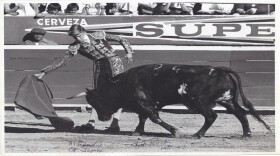From Texas Standard:
The time of year for an annual ritual on the Gulf Coast is approaching – when Texans take to the beach to watch dozens of tiny turtles toddle from the sand down to the surf. There's certainly something special about watching sea turtles hatch, but there's some mystery, too. We still don't about where the turtles in the Gulf travel, and what habitats they use. That's why this week, Texas A&M University at Galveston announced the establishment of the new Gulf Center for Sea Turtle Research.
The center's director, Chris Marshall, is a professor of marine biology at Texas A&M Galveston. He says Texas is home to several varieties of sea turtle, including the endangered Kemp's ridley, which is the official sea turtle of Texas.
"They're slowly coming back, but they're still listed as critically endangered," Marshall says.
Green sea turtles, on the other hand, are plentiful in Texas. Marshall believes that sea turtles can probably be found in every estuary system in Texas, even those north of the Gulf Coast.
"But we really can't say for sure, because we don't have enough data out there to tell how many turtles there are, and where they're moving, and what kind of habitat they're using," Marshall says.
Marshall says data about sea turtles and their movements are limited.
"Particularly for the western Gulf of Mexico, my colleagues have been referring to this area as kind of a black box in terms of the data available for sea turtles," Marshall says.
The new research center aims to learn more about turtles by capturing and tagging them, particularly on the upper Gulf Coast. The tags allow scientists to record whether a particular turtle has been caught before. With satellite tracking, researchers can follow a turtle for months.
Marshall says sea turtles have life spans of up to 50 years. His research center's work will track the animals over the long term, and train graduate students to continue that work.
Written by Shelly Brisbin.
Copyright 2020 KUT 90.5. To see more, visit KUT 90.5. 9(MDAxODQzOTgwMDEyMTcyNjI4MTAxYWQyMw004))









